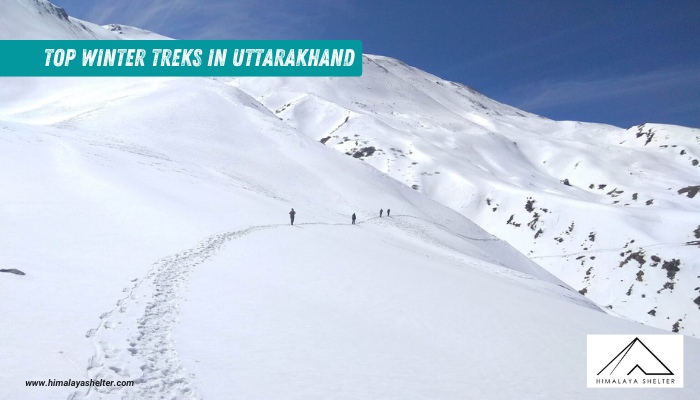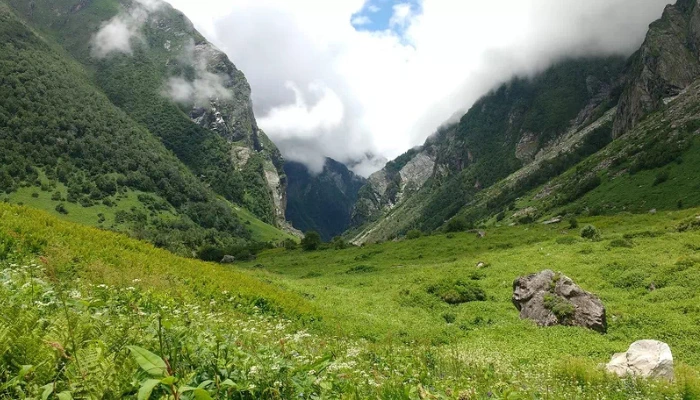
Mayali Pass Trek
TREK DIFFICULTY
Easy
TREK DURATION
14 Days
HIGHEST ALTITUDE
3500 meters
GROUP SIZE
12
TREK DISTANCE
90 km
BASECAMP
Uttarakhand
BEST TIME
June To September
PICKUP POINT
Dehradun (Prince Chowk)
Mayali Pass Trek
Mayali Pass Trek is Situated in the Bhilangana Valley at an altitude of 5300 meters. its famous for its stunning views, the view point from Mayali Pass offers several peaks like Mt. Thalaysagar, Bhartekuntha, Kedardome etc.

This itinerary covers the best of the Kedar range of Garhwal Himalayas. You name it and this Vasuki Tal - Kedarnath trek itinerary offers it. In the beginning, this itinerary follows the challenging trail of the old Gangotri-Yamnotri trekking route.
Mayali Pass Trek is followed by a thrilling adventure of camping at Garhwali Bugyals, steep ascent on rocky terrains, crossing of the windy Mayali Pass and finally camping under the stars in a desolate wildlife sanctuary. The peaks like Sumeru, Kedar Dome, Chaukhambha, Thalaysagar, Nilkanth and Mt. Vasuki can be seen throughout the considerable part of the trek. Hence, it is certainly one of the most adventurous, challenging and offbeat treks of Uttarakhand.
Wildlife enthusiasts may seek a never-had-before experience. Ghorals, Bharals, Himalayan Bears, musk deer, red giant flying squirrel, vultures, wild owls, and the high-altitude Himalayan reptiles are commonly spotted on this trek. Snow leopards have also been a matter of usual sighting in Kedar Wildlife Sanctuary. Thanks to the Musk Deer conservation program, there are a plethora of musk deer. Hence, the number of leopards has seen a constant increase too. The Rich flora of Panwali Kantha Bugyal, Birodh and Chowki Bugyal give you a feel of virtually attempting the valley of flowers trek. Almost all the species of flowers in the valley are found on this route.

Myriads of birds greet you throughout the trek. You may also get an opportunity to click some of the rare species. The coniferous forest of this region nurtures the birds like Himalayan Monal, Dark Breasted Rosefinch, Yellow Breasted Greenfinch, Redstart, species of Treecreepers, Wagtails, Asian Paradise Flycatcher, Himalayan Bulbul, and Ashy Drongo.
Trekking through isolated landscapes helps you connect with your inner self. Moreover, a visit to one of the most auspicious shrines of Kedarnath makes this journey a spiritual one. Besides covering the places of religious importance like Kedarnath and Vasuki Taal, you would unravel a totally unconventional route experiencing the eccentricity of Mother Nature. This is your chance even to take a closer glimpse of Garhwali culture. Staying at rustic villages like Gangi and Ghuttu gives you an opportunity to sneak into the local homes, their languages, folksongs and of course the local food.
History of Mayali Pass Trek
Mayali Pass is located close to Kedarnath, one of the 12 Jyotirlingas of Lord Shiva. Locals and folklore say that Lord Shiva wandered in this region and he crossed the meadows and ridgelines during his wanderings. Pandavas from Mahabharata also travelled through this region during their final journey towards heaven.
The famous Vasuki Tal, a glacial fed lake is named after Vasuki Nag (the serpent god) who serves as Lord Shiva's garland. It's believed that Lord Vishnu took a bath in this lake before attending the celestial wedding of Lord Shiva.
The Mayali Pass route was often used by saints, yogis and pilgrims as their penance and meditation place. Its remote terrain was perfect for a deep mediation or penance to keep them away from distractions and worldly attachments. Even during the medieval period, the Mayali Pass region remained untouched and protected from Mughal invasions due to its remoteness and rugged terrain.
In the late 90s, when Indian mountaineers started exploring the hidden trails, the documentations of these trails began. In the last two decades, Mayali Pass trek has gained popularity for its raw Himalayan wilderness. Trekkers who love offbeat treks, come here for pristine nature and divine solitude.
Highlights of the Mayali Pass Trek
- Thrilling Adventure Awaits:
Mayali Pass Trek is followed by a thrilling adventure of camping at Garhwali Bugyals, steep ascent on rocky terrains, crossing of the windy Mayali Pass and finally camping under the stars in a desolate wildlife sanctuary. The peaks like Sumeru, Kedar Dome, Chaukhambha, Thalaysagar, Nilkanth and Mt. Vasuki can be seen throughout the considerable part of the trek. Hence, it is certainly one of the most adventurous, challenging and offbeat treks of Uttarakhand.
- Heaven for Wildlife Seekers:
Wildlife enthusiasts may seek a never-had-before experience. Ghorals, Bharals, Himalayan Bears, musk deer, red giant flying squirrel, vultures, wild owls, and the high-altitude Himalayan reptiles are commonly spotted on this trek. Snow leopards have also been a matter of usual sighting in Kedar Wildlife Sanctuary. Thanks to the Musk Deer conservation program, there are a plethora of musk deer.
Myriads of birds greet you throughout the trek. You may also get an opportunity to click some of the rare species. The coniferous forest of this region nurtures the birds like Himalayan Monal, Dark Breasted Rosefinch, Yellow Breasted Greenfinch, Redstart, species of Treecreepers, Wagtails, Asian Paradise Flycatcher, Himalayan Bulbul, and Ashy Drongo.
The Rich flora of Panwali Kantha Bugyal, Birodh and Chowki Bugyal give you a feel of virtually attempting the valley of flowers trek. Almost all the species of flowers in the valley are found on this route.
- Journey into Spirituality and Self-Discovery:
Trekking through isolated landscapes helps you connect with your inner self. Moreover, a visit to one of the most auspicious shrines of Kedarnath makes this journey a spiritual one. Besides covering the places of religious importance like Kedarnath and Vasuki Taal, you would unravel a totally unconventional route experiencing the eccentricity of Mother Nature. This is your chance even to take a closer glimpse of Garhwali culture. Staying at rustic villages like Gangi and Ghuttu gives you an opportunity to sneak into the local homes, their languages, folksongs and of course the local food.
Difficulty Level of Mayali Pass Trek
The Mayali Pass is considered a difficult and challenging trek. It is located at the altitude of around 5,300 m (17,388 ft) above sea level. It is ideal for seasoned trekkers who are looking for a thrilling journey and high-altitude adventure.
The terrain of Mayali Pass is highly diverse. It ranges from dense forests to lush meadows, rocky trails, sharp climbs, steep moraines, glacial zones and snow-bound landscapes. Every day, trekkers have to walk through transforming landscapes which is adventurous but also challenging.
The total trek duration is around 10 to 12 (including travel) days which covers approx 70-100 km, depending on the route. Each day involves 5 to 8 hours of walking which can stretch to 10 to 12 hours. The descent toward Vasuki Tal can be particularly challenging due to its steepy and slippery sections.
Weather conditions can be unpredictable at higher altitudes. Nights can be freezing cold. Sometimes snowfields are present near the pass even during the summer. Sudden rainfall and hailstorm can add delays and difficulties.
Trekkers need basic technical support while crossing the pass. On snowfields and steepy ridges, usage of rope and ice axes are common. The basic mountaineering skills and technical guidance is required. There are no proper infrastructure and emergency services en route; a well-equipped support team is essential.
Due to high-altitude and technical challenges, Mayali Pass trek is not suitable for kids and families. Beginners can attempt it but they must be physically fit and mentally enduring. Proper guidance and acclimatization are very important. Solo trekking is also not advisable due to remote terrain, safety and navigation.
Best Time to Visit the Mayali Pass Trek
The best time for trekking to Mayali Pass is from May to June and from September to mid-October. During this time, weather conditions are favourable for trekking the high-altitude mountain peaks.
- Mid-May to June
During this time, snow on lower altitudes starts melting but on higher altitudes, it is still present. Overall, it’s more settled and avalanche risk is reduced. Temperature is relatively moderate: around 10°C to 18°C in day time and 0°C to below 5°C at night time. Trekkers must stay updated on the weather forecasts. Sudden rainfall, hailstorms or white out can happen. The forests and meadows are lush green on lower camps.
- September to mid-October
Post monsoon, weather is more reliable as rainfall subsides by early September. Sky is clearer and mountain peaks are visible. The snow conditions are still good for climbing. Daytime temperature is around 8°C to 15°C and at night time it usually drops below 0°C, depending on lower and higher altitudes. By late October, weather conditions can turn cooler and snowfall chances are high so it's advisable to complete the trekking within the October month.
- Months to Avoid
Climbers should avoid the monsoon season (July-August) due to heavy rainfall. It increases the risk of landslides and makes visibility very poor. Trails become slippery and leech-infested. Similarly, from mid-October to April is also not considered favourable due to cold temperature and heavy snowfall.
How to Reach the Mayali Pass Trek
Mayali Pass is a high-altitude mountain pass located in Garhwal Himalayas of Uttarakhand. Trek to Mayali Pass usually starts from Ghuttu, a small town in Tehri district.
To reach here, first reach either Rishikesh or Dehradun which are well-connected by air, road and train to major cities of India. You can reach Rishikesh via Jolly Grant Airport (Dehradun).
From Rishikesh or Dehradun, take a taxi or shared jeep to Ghuttu (around 210 km). It takes nearly 8 to 10 hrs, depending on road conditions; roads are narrow and winding.
Upon reaching Ghuttu, start your trek to Mayali Pass. The trail passes through beautiful small villages like Reeh and Gangi. Key places along the route include Kharsoli, Khatling Glacier and Vasuki Tal. The final stretch crosses the Mayali Pass (5,300 m).
The trail is remote, diverse and challenging. Trek duration can be longer than 10 days (due to unpredictable weather). Mobile connectivity and emergency services are not available apart from certain villages. It's highly advisable to hire a certified guide or join a support team.
Things to Carry in the Mayali Pass Trek
Clothing
- 3 quick-dry T-shirts (full sleeves preferred)
- 2 trek pants (water-resistant if possible)
- 1 fleece jacket or woollen sweater
- 1 down jacket or heavy padded jacket
- 1 thermal inner set (top + bottom)
- Waterproof & windproof jacket
- Poncho or raincoat
- Woolen cap + Sun cap
- Neck gaiter or scarf
- 2–3 pairs of synthetic/woolen socks + 1 pair of woolen gloves
- Innerwear (quick-dry), towel
Footwear
- Trekking shoes (ankle-high, good grip)
- Floaters/sandals (for campsites)
- Gaiters (recommended due to snow/rock)
Bags
- 50–60 litre backpack (with rain cover)
- Daypack (10–20 litre) for summit day or acclimatization walks
- Dry bags or ziplocks (to keep items dry)
Personal Gear
- Trekking pole(s)
- Sleeping bag liner (optional)
- Headlamp with extra batteries
- Water bottles (2L total capacity) or hydration pack
- UV-protection sunglasses
- Sunscreen (SPF 50+), lip balm (SPF)
Toiletries & Hygiene
- Toothbrush, toothpaste, biodegradable soap
- Wet wipes, hand sanitizer
- Toilet paper, sanitary pads/tampons (carry back used items)
- Small quick-dry towel
Personal Medical Kit
- Diamox (for altitude)
- Crocin/Dolo, Combiflam, Digene
- ORS sachets, antiseptic cream
- Band-aids, gauze, crepe bandage
- Personal meds (if any)
- Betadine/Savlon
Documents
- Valid ID proof (Aadhaar, Voter ID, etc.)
- Medical certificate (fitness)
- Disclaimer form (from your trek operator)
Others
- Power bank
- Extra camera batteries (cold drains battery fast)
- Energy bars, dry fruits, glucose
- Notebook + pen (optional for journaling)
Har Ki Dun trek | Bali Pass trek | Phulara Ridge Trek | Kedarkantha Trek | Winter Dayara Bugyal| Dayara Bugyal trek | Gaumukh Tapovan trek | Kashmir Great Lakes trek | Valley of Flowers trek | Nag Tibba Trek | Kuari Pass trek | CHOPTA CHANDRASHILA TREK | Treks in Uttarakhand | Trekking companies in Dehradun |
In Himalaya Shelter, we provide you with the option to customize your Mayali Pass trek experience. Whether you're an avid mountaineer, an adventure seeker or a group of friends, you can opt for our personalized tailor-made expedition program.
This customized program will be exclusively designed for you, taking into account your specific requirements for transportation, accommodation, meals, technical equipment and any other premium facilities you may need during the climb.
Starting from Dehradun (pick up point), the Mayali Pass trek passes through quaint villages and scenic destinations. The actual trek starts from Ghuttu, a small town in Tehri district.
Himalaya Shelter ensures your journey is safe and memorable with experienced local guides, technical support and all necessary permits. You can even request offbeat routes or sunrise hikes for a more immersive Himalayan experience.
Moreover, no other participants will be added to your group. Choosing a customized program will enable you to enjoy your journey without any hesitation.
Day 1: Day 1: Dehradun - Ghuttu - Drive to the road-head at Ghuttu (188Kms;8-9 hrs Drive,1524 m)
We all embark on this adventure to attempt Vasuki Tal Trek as soon as everyone has reported. Today’s drive takes you across the tributaries like Rispana River, Song River, Chandrabhaga, Bhagirathi and Bhilagna River. Each of these rivers offers surreal sights of the valleys carved by them. However, Tehri Dam, located on Bhagirathi River, is usually the star
of this route. The green, calm waters of the dam would accompany you for almost about 5-6 kilometres on your left. After Crossing the Zero Bridge, we would leave Bhagirathi behind and follow the course of Bhilagna river all the way to Ghuttu Village.
Small towns and villages like Talai, Bagar, Chamba, Tehri, and Ghansali are perched along the mountain roads. You may choose to withdraw cash or complete any last-minute shopping during the small breaks on this journey.
Our destination is a rural site in Ghuttu Village which is located across Bhilagna River. This would be our base camp from where we shall start Vasuki Taal Trek. Relieve all the tiredness of the journey by soaking in the serenity of this village.
Overnight Stay: Ghuttu
Day 2: Day 2: Ghuttu - Dhu panda - (13 Kms;7-9 hrs trek,2896 m)
The cacophony of the chirping birds in the village would announce the morning in this village. It is a long yet easy leisure trek till Dhu Panda. You shall be crossing remote Garhwali villages and some hillside plantations. The mild ascent on this day prepares you for the more strenuous climbs ahead. It is utmost important to start mildly for the longer trekking journeys like this. Almost throughout the trek, you may relish the view of Rhododendron forests till your eyes can see.
Overnight Stay: Camping at Dhu Panda
Day 3: Dhupanda – Panwali Bugyal - ( 6 Kms; 3-5 hrs trek,3963 m)
We all embark on this adventure to attempt Vasuki Tal Trek as soon as everyone has reported. Today’s drive takes you across the tributaries like Rispana River, Song River, Chandrabhaga, Bhagirathi and Bhilagna River. Each of these rivers offers surreal sights of the valleys carved by them. However, Tehri Dam, located on Bhagirathi River, is usually the star
of this route. The green, calm waters of the dam would accompany you for almost about 5-6 kilometres on your left. After Crossing the Zero Bridge, we would leave Bhagirathi behind and follow the course of Bhilagna river all the way to Ghuttu Village.
Small towns and villages like Talai, Bagar, Chamba, Tehri, and Ghansali are perched along the mountain roads. You may choose to withdraw cash or complete any last-minute shopping during the small breaks on this journey.
Our destination is a rural site in Ghuttu Village which is located across Bhilagna River. This would be our base camp from where we shall start Vasuki Taal Trek. Relieve all the tiredness of the journey by soaking in the serenity of this village.
Overnight Stay: Ghuttu
Day 4: Panwali Bugyal – Talli - (Approx.8 Kms; 4-6 hrs trek)
The cacophony of the chirping birds in the village would announce the morning in this village. It is a long yet easy leisure trek till Dhu Panda. You shall be crossing remote Garhwali villages and some hillside plantations. The mild ascent on this day prepares you for the more strenuous climbs ahead. It is utmost important to start mildly for the longer trekking journeys like this. Almost throughout the trek, you may relish the view of Rhododendron forests till your eyes can see.
Overnight Stay: Camping at Dhu Panda
Day 5: Talli - Gangi - (Approx.8 Kms; 6-8 hrs trek)
Bugyals are the unique beauties that Uttarakhand is blessed with. Panwali Bugyal is one of such less-explored gems of Northern Garhwal Himalayas. It offers much more than just a trekking experience. It is a high-altitude landscape of rolling meadows at 3963 metre. The trek till here is moderately difficult but the view compensates for every single effort of reaching here. It is not even an exaggeration to call Panwali Kantha as an amphitheatre. Many people opt for the Panwali Kantha Trek for the mesmerising views.
It offers a 360-degree view of the major ranges like Kedar, Gangotri, Yamnotri and Badri. The prominent peaks that you can spot are Kedar Dome, Thalaysagar, Kirti Stambh, Chaukhambha, Meru and Nilkanth. The spring season covers the meadows with colourful flowers like poppies, daisies, primulas, anemones and of course, the rhododendrons of all varieties. It feels nothing less than a green canvas of grass painted with purple, pink, red and yellow dancing flowers. Many of these flowers, bushes and plants have herbal cures. Don’t be surprised to find local Vaidyas and saints plucking some of these plants to survive the tough year ahead. Most trekkers often choose Panwali Bugyal for the spectacular sunset that makes everything sparkle bright-golden.
On the other hand, winters paint all the peaks and meadows snowy white. If you love wildlife, prepare yourself to spot some rare musk dears and the wild animals like Bharal,bears, weasels, and Ghoral.
Overnight Stay: Camp at Panwali Bugyal
Day 6: Gangi (Day for rest and leisure)
For today’s trek we shall descend towards Gangi village. The trail is well carved. You may want to be extra careful if it has rained. We shall be crossing open trails that offer the view of the widening valley down below. Some stretches also pass-through dense vegetation and tall pine trees. This is an apt trail to hear and spot the local birds of the region. Gurgling waters of small streams running down the hills add to the music of the forest. Talli would be our campsite for today amidst the abundance of nature.
Overnight Stay: Campsite at Talli
Day 7: Gangi - Biroda - Kharsali (11 Kms; 6-7 hrs trek)
This day involves a reasonable amount of ascent to reach Gangi Village located at an altitude of 2,465 metre. You will initially trek though a stretch of a dense forest crossing small streams. After about 3-4 hours, the plantations and the remote Garhwali villages start to appear. Walking along the village canals and water channels amidst the swaying fields ofn potatoes, rajma, and other grains is exhilarating. During the early summers, these fields are full of fragrant flowers. Finally, after a short climb we reach a village where time stands still.Gangi Village shall be our rest point for 2 nights.
Overnight Stay: Campsite/Homestay at Gangi Village
Day 8: Kharsali - TambaKund (8 Kms; 7-9 hrs trek)
After the challenging treks of past few days, it is extremely important to rejuvenate your body. It is crucial to restore energy for more challenging trekking in the coming days. Gangi is a village untouched by modernization. It is a sleepy hamlet with a mere population of around 300+ humans. Age-old tiny wooden temples, overlooked by giant mountains sprinkled with snow, are the main attractions here. Terraced fields and wafting fragrance of flowers become your leisure-time-buddies. Enjoy this village while chatting with the elderlies of the village. They have hundreds of tales to tell you about Devbhoomi Uttarakhand. Alternatively, you may chase the hopping sunbirds and squeaking magpies in the outskirts of the village.
Overnight Stay: Camp/lodge at Gangi
Day 9: Tamba Kund - Khatling – Tambakund (3 Kms 4-5 hrs trek, 3415 m)
After a rest day at Gangi, we shall descend down till their winter settlement, Deokhri Channi. Further ahead, the path passes through a dense forest. The mix of mild ascents and descents enables you to enjoy the calls of Himalayan birds. To your delight, you may be able to spot Himalayan Monal, Warbler, Coppersmith Barbet, Blue Magpie, and a variety of Parakeet species.
The gurgling sound of the beautiful Kalyani stream would suggest the vicinity of today’s destination. Refill the bottle here or relax for a while in its refreshing waters. After crossing the stream, we reach the diversion. From here, the left trail stretches to Sahastra tal. It is an idyllic location that hides this isolated lake of Uttarakhand. If time permits, we may pay a quick visit to this lake. Otherwise, we must follow the right trail. The dense forest opens on your way to vast meandering meadows. This is Biroda Bugyal. Enjoy the stunning paradise created by wavy hills and evergreen conifers. 3-4 kilometres ahead of this bugyal lies our campsite for the day. Soak in the immaculate charm of mother nature here. In the evening, savour the spectacular colours of sunset. Prepare for the next morning and sleep cozily while listening to the music of the rustling leaves.
Overnight Stay: camp at Kharsali
Day 10: Tambakund - Masar Tal (7 Kms; 8-10 hrs trek, 3675 m)
After a scrumptious breakfast we start hiking along the trail carved beyond the village. The trail is relatively flat till the river bank. It passes through the rolling meadows in the beginning. Post that, we start the ascent to a barren mountain patch devoid of vegetation. The view of the snow-capped mountains would accompany you throughout the day. Small snow-fed streams keep crossing your path. Don’t forget to spot the distant waterfalls tumbling down the Bhilangana Range.
Finally, after 8 hours of moderately difficult climb, we reach a serene spot at Tambakund. Tambakund is a small pond that can be considered the source of Bhilangana River. Relax in the evening, relish a hot dinner and prepare for tomorrow’s trek. Khatling Glacier, that feeds the river, is just 3 kilometres from this campsite. We shall spend the night under the stars at Tambakund
Overnight Stay: Campsite at Tambakund
Day 11: Masartal to Masar-top to Vasukital via Mayali Pass (14 km)
Today, we proceed for a mildly strenuous trek to Khatling glacier located at an altitude of 3415 metre. It is the birth place of Bhilangana River that nurtures the human settlements in almost half of Northern Garhwal Region. Khatling glacier is one of the largest glaciers in the Himalayas. From Tambakunda, the trail starts over the wooden bridge across the river. The trail traverses through the grassy meadows of Chowki. It is frequented by shepherds who come here to feed their herds of sheep. The valley is dotted by flowering plants including that of Brahma Kamal during its blooming season. You might spot certain wild moths and butterflies along this route. It may take around 2 or more days to explore the glacier
entirely. We shall aim for the ‘Zero Point’ at this glacier. It is an enchanting viewpoint in the lap of this giant icy glacier. After having enjoyed the beauty of this place for some time, we shall proceed to trace the path back to Tambakund.
Note: You shall not carry all your luggage today and have a relaxed climb by just carrying the essentials.
Day 12: Vasuki Tal - Kedarnath (Approx.6 Kms; 4-6 hrs trek, 3584 m)
We start today’s trek early. Eat well to energise yourself for the steep ascent of the day. From Tamabakund, via Chowki, we keep climbing throughout the day. Post-lunch, you would see the Khatling glacier and milky-white waters of Doodhganga river below you. The shining waters of Bhimtal lake can also be seen down below.
Masar Lake is a small pond tucked amidst the painting-like backdrop of lofty mountains of Kedar Range. The picturesque woodlands and carpeted green meadows enhance the beauty of this lake. The cherry on the top is the wild-flower blooming in this bugyal during monsoon. If luck favours, this campsite near the lake is perfect for star-trail photography or Milky Way spotting on a clear night.
Overnight Stay: Campsite near Masar Tal
Day 13: Kedarnath - Gaurikund – Rudraprayag (14 Kms; 6-7hrs Trek)
We started early morning towards Mayali Pass (about 17,800 feet) in the biting cold. First we will go to Masartal, a beautiful lake on a high mountain with several camping spots.
The climb towards Masar Top presents a difficult challenge. This route, located on the left side of the lake, is particularly difficult, with a steep gradient of about 65 degrees. This particular stage of the trek is the most difficult. The presence of stones surrounded by pieces of ice in between increases the difficulty of the journey. Each step forward requires concerted effort, as this field demands both physical strength and mental toughness.
After taking rest and spending some time on the top we move forward to cross the Mayali Glacier. Once you raeched the Mayali Top you are witness to see many peaks from there like Mt. Thalaysagar, Bhartekuntha, Kedardome after spending some time at the top move down towards Vasuki Camping site
Overnight Stay: Campsite near Vasuki Tal
Day 14: Rudraprayag - Rishikesh - Dehradun (188 Kms;8-9 hrs Drive
The route from Vasuki Taal to Kedarnath is a complete descent. Nonetheless, there is no dearth of adventure on this route. Once you bid adieu to the pristine sight of the Vasuki Lake, the real challenge begins. It is the time to hold your breath to cross the two glaciers namely, Chaturangi glacier and Vasuki Glacier. The precarious narrow trail requires the trekkers to take every step vigilantly. Apart from this little adventure, the rest of the trail demands careful descent. It is crucial to not hurt your ankles or knees owing to immense pressure. Thus, the trekkers are advised to follow the guides’ instructions.
Post this thrilling day, a divine sight of the Kedarnath Jyotirlinga awaits you. After reaching the lodge, freshen up to visit the temple. The black-stone structure sings the glory of devotion and art of ancient India. Kedarnath Temple, located at an altitude of 3,583 metre, is believed to have been built by Pandavas. The legend of the Temple is closely related to the Panch Kedar Legend. During the repentance period, post-Mahabharat, Pandavas were seeking for Lord Shiva. After hiding for days at Guptkashi, Shiva was finally spotted by Bhima in the form of a bull. However, before they could reach till the Bull, it disappeared. It then reappeared at different places in the valley which are now known as Panch Kedars. Kedarnath is the first of these five temples. The hump of the bull appeared here and the lord is worshipped here in the same form.
Do not miss the sunset at this divine site. The Kedar Dome is tinted with the hues of saffron and then pink as the Sun God prepares to set. This holy view accompanied by the vibrating sound of temple bells create meditative vibes in the atmosphere.
Overnight Stay: camp/Lodge at Kedarnath
Our treks are specially designed by the experienced team at Himalaya Shelter, taking you on an adventure of a lifetime all while making you connect not only with the bountiful nature but also with yourself and with others on the trek with you, creating wonderful memories which will last you a lifetime. All Himalaya Shelter treks are guided by experienced Trekkers having vast knowledge and experience of the region, providing with insightful information and stories pertaining to the region’s flora and fauna and the history of the region, whilst on the trek. It is safe to say that on successfully completing the trek, one will gain tremendous insight and experience along with lifetime memories.
Trek Package Inclusions
- Transport - Pickup time: 7:30 am, (Prince Chowk, Near Dehradun Railway Station)
- Accommodation – At Base Camp, stay at a local homestay or guest house for one night each, which will give you an insight into the authentic lifestyle of the locals. (INR 5000 per person extra for single sharing throughout the trek)
On Trek stay in a 2-person Vango Halo Pro/A-Shape tent, which is to be shared by two trekkers, built to withstand extreme weather conditions and at the same time making you comfortable after a hard day’s trek. - Camping Equipment – specially designed sleeping bags that can withstand harsh weather conditions, foam mattresses. Other safety gear like microspikes, gaiters, an ice axe, and helmets will be provided.
- Medical Kit – our team will be equipped with an extensive medical kit, which our team is trained and experienced to use. Oxygen cylinders are used after they are thoroughly inspected throughout the Trek. Even campsites have large oxygen cylinders as backups.
- Permission - Forest entry charges for Indian nationals (Additional charges will be applicable for international tourists)
- Meals – Breakfast, packed lunch (on trek days), evening snacks, and dinner will be served. A hearty, delicious, and nutrition-filled Veg meals with egg preparation will be provided throughout the trek. (Jain and Vegan Food can also be arranged on prior notification.)There will be a dedicated Kitchen Tent along with a dining tent, which will have a dining table too.
- Our Team – A highly experienced and AMC-certified Trek Leader who will help ensure that the entire trek goes smoothly and safely while navigating the challenging conditions during the trek, and is skilled enough to navigate any medical emergency that can arise during the trek. Local and route Guides who are well-versed with the region and provide an in-depth insight into the local customs and knowledge of the flora and fauna endemic to the region. A dedicated Kitchen staff, which includes a Cook, a helper, and other support staff. There will also be porters and mules to carry common equipment.
- Cloakroom - We have a cloakroom facility available for extra luggage. Every trekker is permitted to leave their luggage behind at no charge.
Exclusions
- Personal expenses like tips, personal medicines, phone calls etc.
- Travel Expenses - Travel expenses from your hometown to the mentioned Pick-Up Point are not included in the trek fee.
From the scheduled pick-up spot to the base camp, we have our own fleet of vehicles like Bolero, Innova, Dezire, or Tempo Traveler (12-seater). This is be shared by trekkers for a pre-decided amount. All vehicles are non-AC. - Personal Equipment - Any personal gear like jackets, shoes, cutlery, or backpacks are not included in the trek fee. We recommend renting them from our Rental Store for an affordable fee. This can be pre-arranged to avoid last-minute hang-ups.
- Offloading - We encourage carrying your backpack to get into the true spirit of trekking. However, if needed, you can opt to offload your personal luggage of up to 12 kgs for an additional cost of INR 400 per bag per day.
- Trek Insurance - A mandatory trek insurance fee is charged in addition to your trek fee. Since most medical insurance doesn’t cover adventure activities, trek insurance offers essential coverage, enhancing your safety without a significant financial burden.
- Buffer day on the trek - We have kept a buffer day on the trek to account for any weather-related delay. If this is utilized, you will need to pay an extra amount to your trek leader.
- Anything apart from inclusions
- Please carry a lunch box for a packed lunch/breakfast to avoid using polythene and Aluminium foil.
Keeping the Himalayas clean is our own responsibility. Reduce the use of Plastic when you are in the abode of the Sacred Himalaya. 🌱
Accommodation during the trek is usually in Tents or basic lodges. These provide a warm and comfortable shelter from the cold.
Read More on Mayali Pass Trek
Photo Gallery








Treks by Categories
Treks By Month

Treks By Experience























